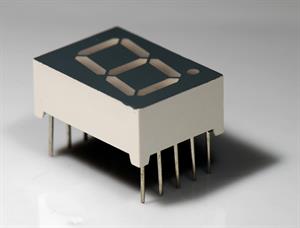
PUMPA - SMART LEARNING
எங்கள் ஆசிரியர்களுடன் 1-ஆன்-1 ஆலோசனை நேரத்தைப் பெறுங்கள். டாப்பர் ஆவதற்கு நாங்கள் பயிற்சி அளிப்போம்
Book Free DemoAn LED (Light Emitting Diode)bulb is a semiconductor device that emits visible light when an electric current passes through it. The type of materials utilised will determine the colour of the emitted visible light.

LED bulb
The manufacturer creates LED bulbs that emit red, green, yellow, and orange colours using chemical compounds such as gallium arsenide and gallium phosphide.
Uses of LED bulbs:
LED bulbs are used in a variety of applications. Some of them are listed below.
- Digital watches
- Calculators
- Traffic signals
- Street lighting
- Ornamental lights
Merits of a LED bulb:
- LED bulbs are cooler than incandescent bulbs. Due to the absence of filament in LED bulbs, there is no energy loss in the form of heat. Hence, LED bulbs are preferred over incandescent bulbs.
- LED bulbs consume substantially less energy than fluorescent lights.
- LED bulbs are eco-friendly and do not produce any harm to the environment.
- Since LED bulbs emit visible light, a wide range of colours are produced.
- LED bulbs are cost-efficient and energy-efficient than any other bulbs.
- LED bulbs do not use mercury or any other toxic materials.
- Nowadays, LED bulbs are preferred to overcome the energy crisis and to protect the environment.
To know more about incandescent bulbs, click here.
Seven-segment display:
A display device utilised to provide an output in numbers or text is known as a seven-segment display.

Schematic representation of a seven -segment display
The device comprises seven LED segments named a, b, c, d, e, f, and g. These segments are arranged in the shape of the number eight. Apart from this, an extra eighth LED is provided next to these seven-segments to display a dot.
Applications of seven-segment display:
Seven-segment displays are commonly found in
- Digital metres
- Clocks
- Microwave ovens
- Other electronic devices

Seven-segment display